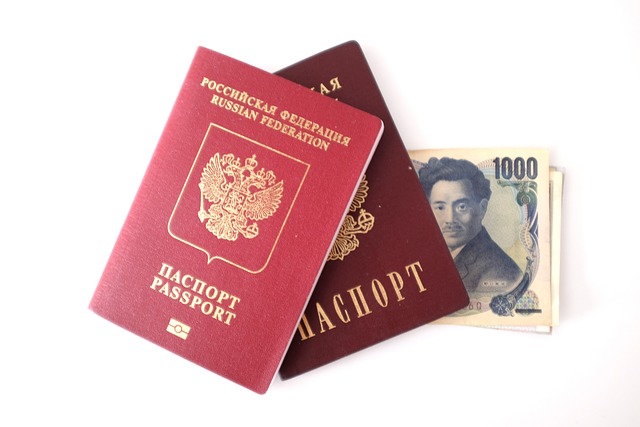How to Apply for a Family Reunification Visa

Family reunification visas allow individuals to join their family members who are legally residing in another country. If you’re planning to apply for a family reunification visa, the process can vary depending on the country and its immigration laws. Below is a comprehensive guide to help you understand the steps, requirements, and tips for successfully applying for a family reunification visa.
1. Understand the Basics of Family Reunification Visas
A family reunification visa enables close family members (spouses, children, parents, etc.) to join a sponsor who is already legally residing in a foreign country. The specific eligibility criteria and procedures depend on the host country’s immigration policies.
Key points to note:
- The sponsor must have legal residency or citizenship in the host country.
- The applicant must prove their relationship with the sponsor.
- Financial stability, accommodation, and health insurance are often required.
2. Determine Eligibility
Before starting the application process, confirm that you meet the eligibility criteria for a family reunification visa. These typically include:
A. Relationship Requirements
Most countries allow family reunification for:
- Spouses or registered partners
- Minor children (under 18)
- Dependent adult children or elderly parents (in some cases)
B. Sponsor’s Status
The sponsor must usually:
- Hold permanent residency or citizenship in the host country.
- Demonstrate sufficient income to support the family member(s).
- Provide proof of adequate housing.
C. Applicant’s Status
The applicant must:
- Prove their relationship with the sponsor (e.g., marriage certificate, birth certificate).
- Meet health and character requirements (medical exams, police clearance certificates).
3. Gather Required Documents
The documentation required for a family reunification visa varies by country but generally includes:
A. For the Sponsor:
- Proof of legal status in the host country (residency permit, citizenship papers).
- Proof of income (employment contract, bank statements, tax returns).
- Proof of accommodation (rental agreement, property ownership documents).
- Health insurance coverage for the applicant.
B. For the Applicant:
- Completed visa application form.
- Valid passport with at least six months’ validity.
- Passport-sized photos meeting the host country’s specifications.
- Proof of relationship with the sponsor (marriage certificate, birth certificate, adoption papers, etc.).
- Medical examination reports (if required).
- Police clearance certificate from your home country.
- Proof of language proficiency (if applicable; e.g., A1 level in some European countries).
C. Additional Documents (Depending on the Country):
- Travel itinerary.
- Proof of financial means (bank statements, sponsorship letter).
- Application fee payment receipt.
4. Submit the Application
Once you’ve gathered all necessary documents, follow these steps to submit your application:
A. Choose the Correct Embassy/Consulate
Submit your application at the embassy or consulate of the host country in your home country. Some countries may require you to schedule an appointment online.
B. Pay the Visa Fee
Pay the non-refundable visa application fee. Fees vary by country and visa type, so check the official website of the host country’s immigration authority.
C. Attend an Interview (If Required)
Some countries require applicants to attend an interview at the embassy or consulate. Be prepared to answer questions about your relationship with the sponsor, reasons for moving, and plans in the host country.
D. Wait for Processing
Processing times vary depending on the country and time of year. It can take anywhere from a few weeks to several months. You can track your application status through the embassy or consulate’s portal.
5. After Approval
If your visa is approved, you’ll receive it via mail or pick it up in person. Here’s what to do next:
A. Travel to the Host Country
Enter the host country within the validity period of the visa. Ensure you carry all original documents with you when traveling.
B. Register with Local Authorities
In many countries, you’ll need to register your address with local authorities within a specified timeframe after arrival.
C. Apply for a Residence Permit (If Applicable)
Some countries issue a temporary visa initially, requiring you to apply for a residence permit upon arrival. Follow the instructions provided by the immigration office.
6. Tips for a Successful Application
A. Start Early
The process can take several months, so begin preparing your documents well in advance.
B. Double-Check Requirements
Immigration rules can change frequently. Always refer to the official website of the host country’s immigration authority for the latest information.
C. Provide Complete Documentation
Incomplete applications are often rejected. Ensure all forms are filled out correctly and all required documents are included.
D. Seek Professional Help (If Needed)
If the process seems overwhelming, consider consulting an immigration lawyer or agency specializing in family reunification visas.
E. Maintain Communication
Stay in touch with the embassy/consulate and respond promptly to any requests for additional information.
7. Common Challenges and How to Overcome Them
A. Language Barriers
Some countries require applicants to demonstrate basic proficiency in the local language. Enroll in language classes if needed.
B. Financial Requirements
If the sponsor’s income doesn’t meet the minimum threshold, consider providing additional evidence of financial stability, such as savings or co-sponsorship letters.
C. Delays in Processing
Delays can occur due to high demand or incomplete applications. Plan ahead and avoid making travel arrangements until your visa is approved.
8. Examples of Family Reunification Visa Processes
Here’s how the process works in two popular destinations:
A. Germany
- Eligibility: Sponsors must hold a valid residence permit or German citizenship. Applicants must prove their relationship and meet integration requirements (e.g., language skills).
- Documents: Marriage/birth certificates, proof of income, rental agreement, health insurance.
- Processing Time: 6–12 months.
B. United States
- Eligibility: U.S. citizens or permanent residents can sponsor spouses, children, or parents. Income requirements are based on federal poverty guidelines.
- Documents: Form I-130 (Petition for Alien Relative), Affidavit of Support, medical exam results.
- Processing Time: Varies by visa category and location (typically 6–18 months).



